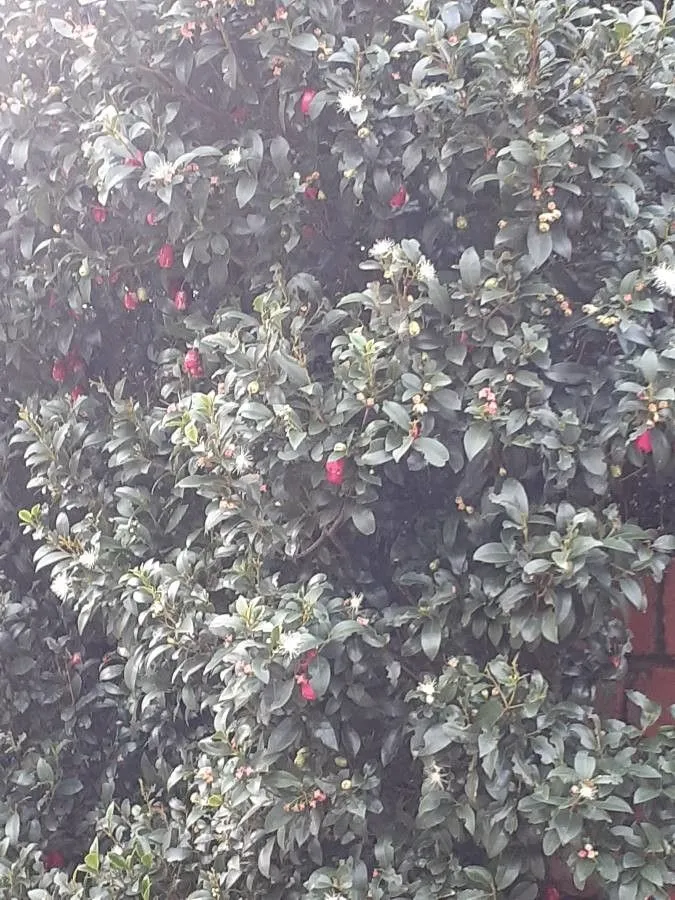
Author: (Poir.) Nied.
Bibliography: H.G.A.Engler & K.A.E.Prantl, Nat. Pflanzenfam. 3(7): 85 (1893)
Year: 1893
Status: accepted
Rank: species
Genus: Syzygium
Vegetable: False
Observations: E. Australia to Victoria
Lilly-pilly, scientifically known as Syzygium smithii, is a remarkable tree that is native to Eastern Australia, extending down to Victoria. This evergreen species belongs to the Myrtaceae family and is renowned for its dense foliage and attractive, ornamental characteristics.
First described scientifically in 1893 by H.G.A. Engler and K.A.E. Prantl in the publication “Nat. Pflanzenfam,” Syzygium smithii has become a favored choice in both residential gardens and urban landscapes. The classification by (Poir.) Nied. emphasizes its solid position within the diverse Myrtaceae family, which is celebrated for its variety of aromatic trees and shrubs.
What sets Lilly-pilly apart is its versatility and utility. This plant can thrive in a range of soil types and conditions, showcasing a resilience that is particularly valued in areas with unpredictable weather patterns. The tree can grow up to 10 meters in height, making it an excellent option for creating privacy screens or windbreaks. Its lush foliage provides ample shade, while its white to pale pink, fluffy flowers add a touch of elegance to any space.
One of the distinctive features of Lilly-pilly is its fruit. The tree produces small, edible berries that vary in color from magenta to purplish-red. These berries not only attract a variety of bird species, enhancing local biodiversity, but they are also used in culinary applications. The fruit can be consumed fresh or used to make jellies, jams, and juices, adding a tangy flavor to these preparations.
Caring for Syzygium smithii is straightforward. The plant prefers well-drained soils and benefits from occasional pruning to maintain its shape and health. Regular watering, especially during dry spells, will ensure that it continues to thrive. In addition, its leaves contain a range of essential oils, contributing to its aromatic nature and making it a pleasant addition to gardens for both visual and olfactory enjoyment.
In landscape design, Lilly-pilly can be used as a standalone feature tree or as part of a mixed planting scheme. Its adaptability, coupled with its aesthetic appeal, makes it a popular choice among garden enthusiasts and landscape architects alike.
In conclusion, Syzygium smithii, or Lilly-pilly, is more than just an ornamental plant. Its historical significance, ecological benefits, and practical uses make it a cherished species in its native Australia and beyond. Whether admired for its beauty or appreciated for its functional attributes, Lilly-pilly continues to be a valuable and dynamic component of any garden or landscape.
Eng: lilly-pilly, monkey-apple
En: Lilly-pilly, Monkey-apple
Fi: Australianmausteneilikka
Taken Jun 26, 2022 by Mairead Young (cc-by-sa)
Taken Mar 18, 2022 by Sazini Makamu (cc-by-sa)
Taken Feb 25, 2020 by Ana María Garrido (cc-by-sa)
Taken Nov 21, 2021 by Abiatti Fecal (cc-by-sa)
Taken Jan 17, 2022 by essteeyou (cc-by-sa)
Taken Oct 28, 2020 by Michelle Manolas (cc-by-sa)
Taken Apr 23, 2020 by Rafael Gustavo dos Santos Rafael Gustavo dos Santos (cc-by-sa)
Taken Feb 19, 2020 by gerri dee (cc-by-sa)
Taken Jan 17, 2022 by essteeyou (cc-by-sa)
Taken Mar 18, 2022 by Sazini Makamu (cc-by-sa)
Taken Nov 8, 2022 by Danielle Stig (cc-by-sa)
Taken Mar 18, 2022 by Sazini Makamu (cc-by-sa)
Taken Jun 15, 2019 by Brett Bissell someguy (cc-by-sa)
Taken Apr 23, 2020 by Rafael Gustavo dos Santos Rafael Gustavo dos Santos (cc-by-sa)
Taken Nov 8, 2022 by Danielle Stig (cc-by-sa)
Taken Dec 31, 2019 by DustyRose (cc-by-sa)
© copyright of the Board of Trustees of the Royal Botanic Gardens, Kew.
Family: Myrtaceae Author: (F.Muell.) K.D.Hill & L.A.S.Johnson Bibliography: Telopea 6: 402 (1995) Year: 1995 Status:…
Family: Rubiaceae Author: Pierre ex A.Froehner Bibliography: Notizbl. Bot. Gart. Berlin-Dahlem 1: 237 (1897) Year:…
Family: Sapindaceae Author: Koidz. Bibliography: J. Coll. Sci. Imp. Univ. Tokyo 32(1): 38 (1911) Year:…
Family: Asteraceae Author: A.Gray Bibliography: Pacif. Railr. Rep.: 107 (1857) Year: 1857 Status: accepted Rank:…
Family: Fabaceae Author: Medik. Bibliography: Vorles. Churpfälz. Phys.-Ökon. Ges. 2: 398 (1787) Year: 1787 Status:…
Family: Aspleniaceae Author: (Cav.) Alston Bibliography: Bull. Misc. Inform. Kew 1932: 309 (1932) Year: 1932…